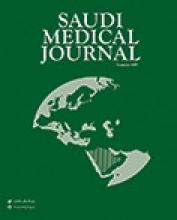Abstract
OBJECTIVE: To determine, the prevalence of hepatitis B virus markers among hospital health care workers, to determine the influence of some risk factors on such prevalence and to outline the specific policies to tackle such problems among hospital health care workers.
METHODS: Hepatitis B virus markers including hepatitis B surface antigen, anti-hepatitis B surface antigen and anti-hepatitis B core antigen were determined from sera samples collected from 459 hospital health care workers at different hospital departments. The prevalence of hepatitis B virus among these employees was correlated by a variety of risk factors such as gender, age, blood transfusion, and needle-stick and sharps injuries, and previous history of jaundice using logistic regression analyses.
RESULTS: Of the hospital health care workers studied 143 (31%) of employees showed evidence of previous hepatitis B virus infection, including 17 (4%) carriers. The highest incidence was among those who were working at infectious diseases departments where 22 (43%) employees were found to be seropositive, followed by 26 (41%) employees from surgical departments. The risk factors, which were found to influence seropositivity, include age over 40 years old, needle-stick and sharps injuries and previous blood transfusion. Other factors such as gender, and previous history of jaundice were statistically insignificant.
CONCLUSION: The hepatitis B virus infection was high among the hospital health care workers studied. This was influenced by certain potential occupational risk factors. As there is emerging evidence that vaccination among health care workers was infective. Specific measures should be implemented to reduce such risk. These may include strict policies on sharps and considering any blood or other body fluids being a potential risk. Education, clinical advice and health insurance should be available for health care workers who are at a higher risk of contracting hepatitis B virus infection.
- Copyright: © Saudi Medical Journal
This is an open-access article distributed under the terms of the Creative Commons Attribution-Noncommercial-Share Alike 3.0 Unported, which permits unrestricted use, distribution, and reproduction in any medium, provided the original work is properly cited.






